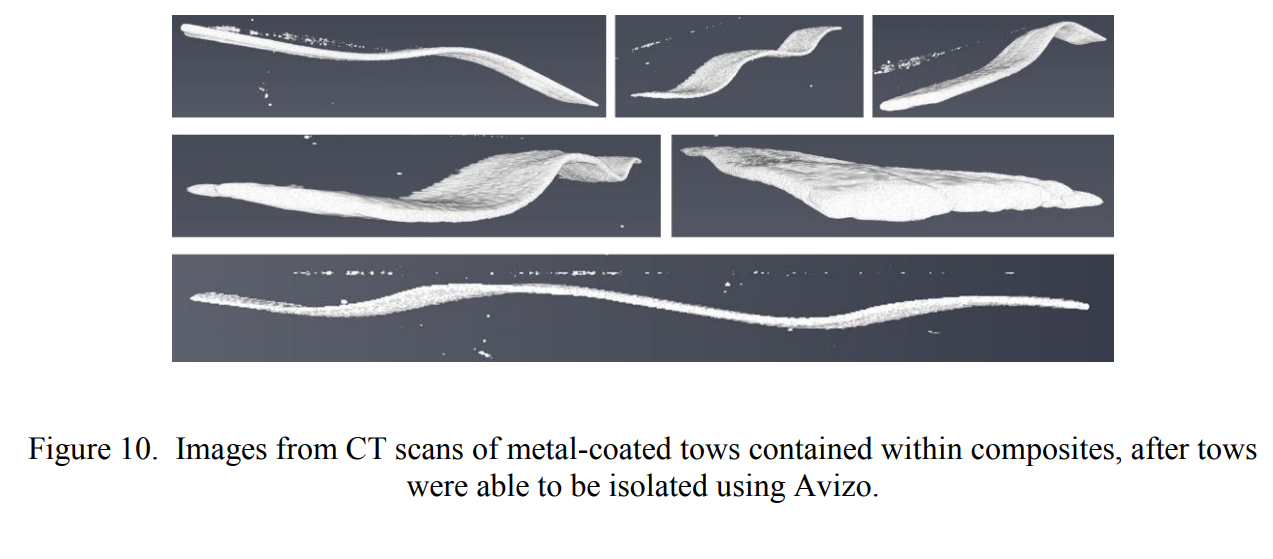Investigation of Carbon Fiber Architecture in Braided Composites Using X-Ray CT Inspection
During the fabrication of braided carbon fiber composite materials, process variations occur which affect the fiber architecture.

Quantitative measurements of local and global fiber architecture variations are needed to determine the potential effect of process variations on mechanical properties of the cured composite. Although non-destructive inspection via X-ray CT imaging is a promising approach, difficulties in quantitative analysis of the data arise due to the similar densities of the material constituents. In an effort to gain more quantitative information about features related to fiber architecture, methods have been explored to improve the details that can be captured by X-ray CT imaging. Metal-coated fibers and thin veils are used as inserts to extract detailed information about fiber orientations and inter-ply behavior from X-ray CT images.
Textile reinforced composite materials are used in many aerospace, industrial and commercial applications. One benefit of using textile reinforcements is that the reinforcement can be made to conform to complex shapes either by fabricating preforms to net shape or by deformation of a compliant preform during fabrication. Although this is beneficial for manufacturing, it presents challenges in the design, analysis, and testing. X-ray CT inspection can provide high resolution visual information about local fiber angles, fiber undulation, and the presence of defects.
However, to take full advantage of the X-ray CT data, methods for automated data analysis need to be developed to quantify variations in local fiber architecture and to provide data that can be used in structural analysis. In this paper an approach using metal coated carbon fiber tows and lightweight metal coated carbon fiber veil as a tracer materials for X-ray CT inspection is examined.